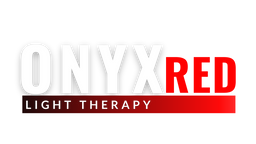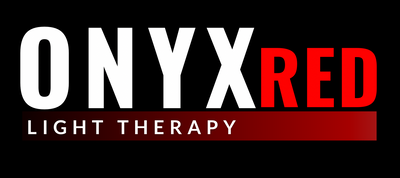June 30, 2023
St. Paul, MN, USA
Today, we’ll talk about incorporating red & near infrared light therapy into your fitness and recovery arsenal. Performance and recovery are critical for everyone (not just elite athletes). We’ll discuss why red light & near infrared therapy is used by amateur and professional trainers and athletes worldwide to support peak performance output and recovery.
What Does it Mean to Optimize Performance and Recovery?
It means giving your body the tools and ingredients it needs to do its many jobs as efficiently as possible. On a practical level, optimizing performance requires you to pay close attention to your body, how it functions, as well as training & living in a way that best supports those processes. In other words, how well you perform at the gym is the product of how you live your life: how intelligently you train, and how you eat, drink, & get quality sleep—not just how hard you push while running or lifting weights.
Recovery and performance are intertwined. To improve you’re your cardiovascular fitness and your strength, it is critical to work out consistently. To get stronger and more fit, you have to gradually push your body to higher and higher levels of performance. [1,2] For most people, that’s the biggest focus of their training. The recovery process—the down time between training sessions—is equally essential for making the fitness gains you are looking for while staying healthy. Quality recovery time allows you to perform better at your next workout and helps prevent fatigue and injuries.[3]
Recovery is Important for Everyone, Not Just Athletes
Recovery isn’t just essential for athletes. Everyone should pay close attention to how their body rests and heals in order to give themselves time to recover from strain and inflammation. [4] What works for elite athletes and trainers can also help cubicle-bound professionals, busy parents, or seniors trying to maintain their activity levels.
The Pitfalls of Not Recovering Properly
Overtraining can severely limit your performance in the short and long term. Your body has limits, and it will start to break down when you push those limits without proper recovery. You’re more likely to suffer injuries and you can negatively affect your hormone levels and immune system as well. [4]
Recovery and Inflammation
After you’ve completed a strenuous workout, your body’s inflammatory response kicks in. Inflammation is essentially your body’s programmed reaction to danger or strain. With exercise, inflammation is a natural response to muscle damage. Light tissue damage is how muscles grow: microtears from exercise and growth are repaired in order for muscle fibers and tissues to grow and get stronger. [4]
Red Light & Near Infrared Therapy Before and/or After Workouts
Today, there’s more focus on recovery than ever before—products, methods, and theories about recovery have never been more prevalent. Most of them are no substitute for sound health and fitness fundamentals. If you’re serious about improving your fitness and recovery, consider these strategies:
Monitor Your Heart: Pay attention to your heart rate and the variability of your heart rate (HRV), a measure of the change in time between each heartbeat. Lower HRV is associated with poor cardiovascular fitness and increased risk of disease. A higher HRV indicates better cardiovascular fitness and more resilience to stress. HRV is a solid way to check how well your lifestyle and exercise program are supporting your heart health. [5]
Prioritize quality sleep: Deep, REM sleep allows you to clear out inflammation, and repair damaged tissues. [6] If you’re not getting 7+ hours of good sleep every night, it will be considerably more difficult for your body to revover from pain, strain, fatigue, and injury. [6]
Get the Blood Flowing: Good circulation is essential for proper healing, whether it’s an injury or the inflammation & strain that comes with working out. Red blood cells transported to injuries carry oxygen, which stimulates the creation of new blood vessels and helps to form new skin and tissues at the damaged site. [7] Blood flow is also crucial for the body's natural inflammatory response. When our bodies are injured or infected, the circulatory system transports white blood cells to the site. Part of the inflammatory response includes vascular dilation so blood can flow more rapidly to the problem area. [7] How you sit, how you move, and when you eat (and drink) all impact your blood flow.
Eat Real, Quality Food: Supporting your body with a diet of organic whole foods and a minimum of processed foods is one of the most reliable ways to help your body work better and recover from damage faster. [8]
Seek Cellular Balance: Your ability to perform and recover comes down to the cells that make up your body. Your body does better, and recovers more effectively, when your cells are creating and using energy efficiently, with as little oxidative stress and inflammation as possible. [9] ATP energy, or adenosine triphosphate, powers everything we do. We make it every day by processing the food we eat or tapping into energy reserves like muscle glycogen. [10] We make ATP through the process of cellular respiration within the mitochondria, which works best when our cells are closest to a state of balance, or homeostasis.
How Red & Near Infrared Light Therapy Supports Optimal Performance and Recovery
Today, athletes and trainers are using advanced health modalities like light therapy to enhance the body’s natural healing and recovery processes. With a high-quality device like Onyx , https://onyxlighttherapy.com/ anyone can experience the recovery benefits of light therapy in their own home.
What is Red & Near Infrared Light Therapy? Light therapy with a device like a Onyx is a simple, non-invasive treatment that uses light emitted from LEDs to deliver wavelengths of red and near infrared light to the skin and cells. Light therapy promotes more efficient cellular energy synthesis (ATP production), and treatments also help restore the balance of stressed cells and tissues. [9,11] This can make a large positive impact on your training and recovery.
There are two primary ways to use light therapy treatments to optimize your fitness and recovery; either before you work out, or after.
Red & Near Infrared Light Therapy Before Exercise: Pre-exercise light therapy can help you limit muscle damage and strain, which can negatively impact performance because due to excessive inflammation and soreness. [12,13]
Red & Near Infrared Light Therapy After Exercise: You can use light therapy after an exercise session, or after every exercise session as a part of your training routine. The primary purpose of post-training light therapy is to speed the recovery process by accelerating muscle adaptation to exercise. [12,13] Light therapy after training also helps the body reduce acute post-training inflammation. [17]
Light therapy treatments have several mechanisms of action on muscle cells, including improvement in cellular ATP energy synthesis, glycogen synthesis, oxidative stress reduction, protection against exercise induced-muscle damage, and the addition of new myonuclei to produce muscle hypertrophy. Light therapy also supports recovery by improving blood flow and oxygen availability. [9-15]
Pulsing Mode from Onyx Light Therapy Products
Onyx Light Therapy pulsing mode is at the forefront of recovery technology. Pulsing mode is a setting on Onyx’s devices that uses pulsed near infrared light to enhance the body’s natural recovery. Cells are under more stress after intense workouts, injuries, and other inflammatory events. Pulsed near infrared light from Onyx gives those damaged cells the most effective form of light for regeneration and recovery. Pulsing mode is ideal to use after a workout or an injury. [14]
Sources and References:
[1] Ratamess NA, Alvar BA, Kibler WB, Kraemer WJ, Triplett NT. American College of Sports Medicine position stand. Progression models in resistance training for healthy adults. Med Sci Sports Exerc 2009;41:687-708.
[2] Garber CE, Blissmer B, Deschenes MR et al. American College of Sports Medicine position stand. Quantity and quality of exercise for developing and maintaining cardiorespiratory, musculoskeletal, and neuromotor fitness in apparently healthy adults: guidance for prescribing exercise. Med Sci Sports Exerc 2011;43:1334-1359.
[3] Michael Kellmann, Maurizio Bertollo, Laurent Bosquet, Michel Brink, Aaron J Coutts, Rob Duffield, Daniel Erlacher, Shona L Halson, Anne Hecksteden, Jahan Heidari, K Wolfgang Kallus, Romain Meeusen, Iñigo Mujika, Claudio Robazza, Sabrina Skorski, Ranel Venter, Jürgen Beckmann. Recovery and Performance in Sport: Consensus Statement. Int J Sports Physiol Perform. 2018 Feb 1;13(2):240-245
[4] So-Ichiro Fukada, Takayuki Akimoto, Athanassia Sotiropoulos. Role of damage and management in muscle hypertrophy: Different behaviors of muscle stem cells in regeneration and hypertrophy. Biochim Biophys Acta Mol Cell Res. 2020 Sep;1867(9):11874
[5] Daniel J Plews, Paul B Laursen, Jamie Stanley, Andrew E Kilding, Martin Buchheit. Training adaptation and heart rate variability in elite endurance athletes: opening the door to effective monitoring. Sports Med. 2013 Sep;43(9):773-81
[6] Michael R. Irwin, Richard Olmstead, Judith E. Carroll. Sleep Disturbance, Sleep Duration, and Inflammation: A Systematic Review and Meta-Analysis of Cohort Studies and Experimental Sleep Deprivation. Biol Psychiatry. 2016 Jul 1; 80(1): 40–52.
[7] Bakker EN, Matlung HL, Bonta P, de Vries CJ, van Rooijen N, Vanbavel E. Blood flow-dependent arterial remodelling is facilitated by inflammation but directed by vascular tone. Cardiovasc Res. 2008;78(2):341-8.
[8] Tindaro Bongiovanni, Federico Genovesi, Monika Nemmer, Christopher Carling, Giampietro Alberti, Glyn Howatson. Nutritional interventions for reducing the signs and symptoms of exercise-induced muscle damage and accelerate recovery in athletes: current knowledge, practical application and future perspectives. Eur J Appl Physiol. 2020 Sep;120(9):1965-1996
[9] Ferraresi C, Kaippert B, Avci P, Huang YY, de Sousa MVP, Bagnato VS, Parizotto NA, Hamblin MR. Low-level laser (light) therapy increases mitochondrial membrane potential and ATP synthesis in C2C12 myotubes with a peak response at 3-6 h. Photochem Photobiol. Mar-Apr 2015;91(2):411-6.
[10] Törnroth-Horsefield, S.; Neutze, R. Opening and closing the metabolite gate. Proceedings of the National Academy of Sciences. 2008 Dec.
[11] Nicolette N Houreld, Roland T Masha, Heidi Abrahamse. Low-intensity laser irradiation at 660 nm stimulates cytochrome c oxidase in stressed fibroblast cells. Lasers Surg Med 2012;44:429-434
[12] Cleber Ferraresi, Michael R Hamblin, Nivaldo A Parizotto. Low-level laser (light) therapy (LLLT) on muscle tissue: performance, fatigue and repair benefited by the power of light. Photonics Lasers Med. 2012 Nov 1;1(4):267-286
[13] Cleber Ferraresi, Ying-Ying Huang, Michael R Hamblin. Photobiomodulation in human muscle tissue: an advantage in sports performance? J Biophotonics. 2016 Dec;9(11-12):1273-1299
[14] Hashmi J, Huang Y. Effect of Pulsing in Low-Level Light Therapy. Lasers in Surgery and Medicine. 2010 Aug.
[15] Cleber Ferraresi, Nivaldo Antonio Parizotto, Marcelo Victor Pires de Sousa, Beatriz Kaippert, Ying-Ying Huang, Tomoharu Koiso, Vanderlei Salvador Bagnato, Michael R Hamblin. Light-emitting diode therapy in exercise-trained mice increases muscle performance, cytochrome c oxidase activity, ATP and cell proliferation. J Biophotonics. 2015 Sep;8(9):740-54
[16] Stephanie Nogueira Linares, Thomas Beltrame, Cleber Ferraresi, Gabriela Aguiar Mesquita Galdino, Aparecida Maria Catai. Photobiomodulation effect on local hemoglobin concentration assessed by near-infrared spectroscopy in humans. Lasers Med Sci. 2020 Apr;35(3):641-649
[17] Michael R Hamblin. Mechanisms and applications of the anti-inflammatory effects of photobiomodulation. AIMS Biophys. 2017;4(3):337-361


